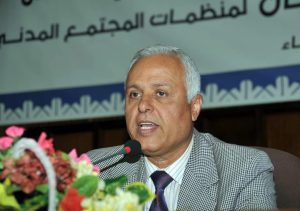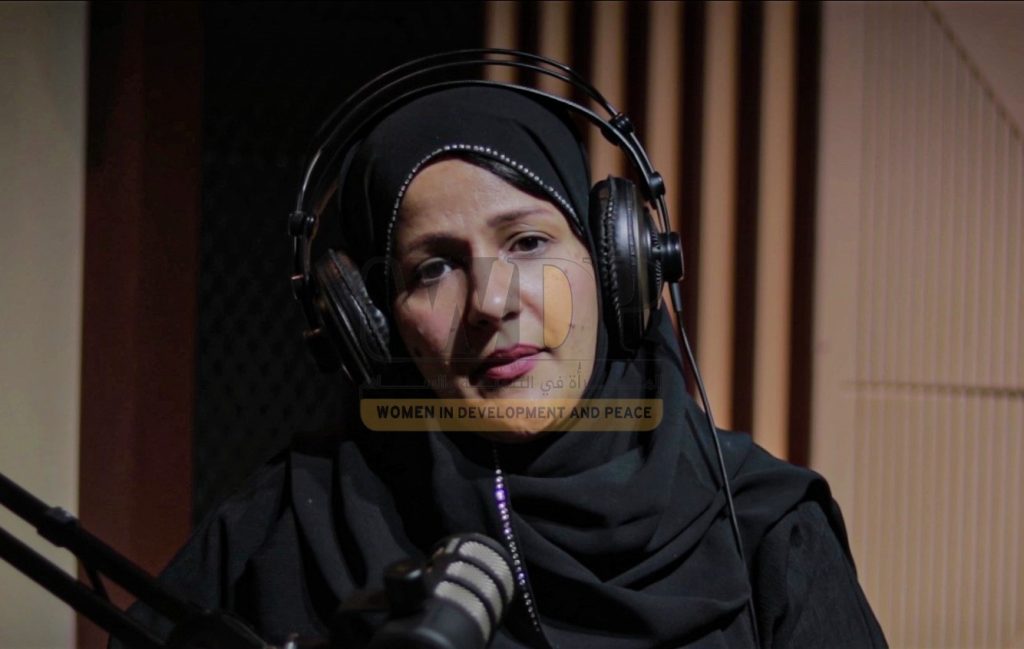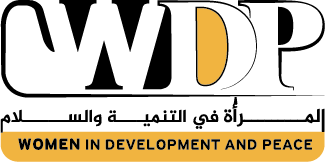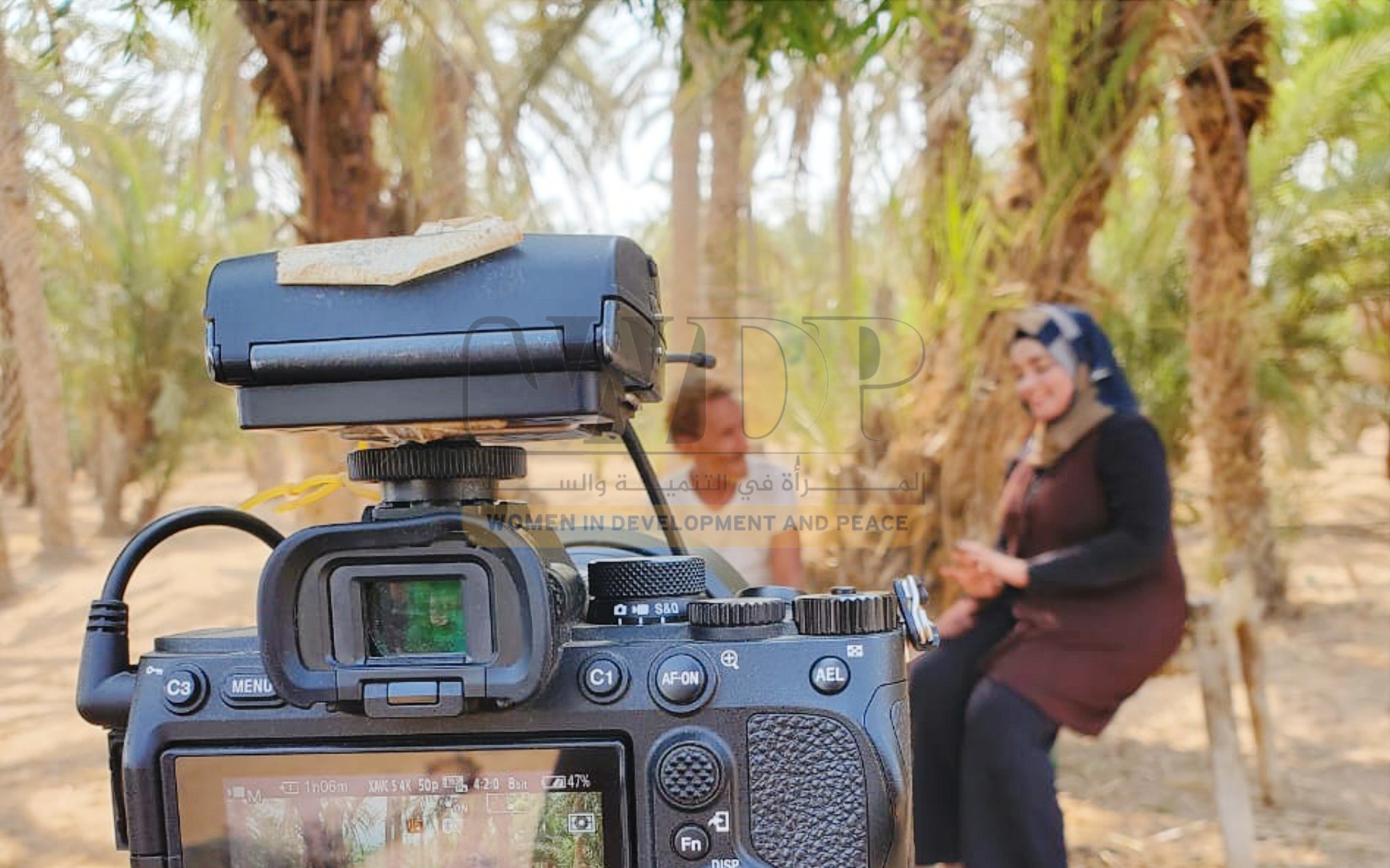Women in Development and Peace – Hebah Mohammed
Yemeni women possess an exceptional role and a strong presence in the field of media. They reflect a rich history of inspiration, challenges, and triumphs through their voices, writings, and reports. Yemeni women have brought about numerous changes and influences in society and the media landscape. Since the early days of media in Yemen, female journalists have proven themselves as an undeniable force, seeking to change prevailing perceptions and promote public awareness.
This report aims to provide a historical overview of Yemeni female journalists and their contributions to the development of media in Yemen. We will trace the journey of Yemeni women journalists from the early days of media in Yemen to the present, highlighting the challenges they have faced and the achievements they have accomplished.
History of Yemeni Women in the Media
The history of Yemeni women in the field of media represents an inspiring story of challenge and change in a society with a rich cultural heritage and strong traditions throughout the decades. Yemeni women have managed to surpass barriers and difficulties, achieving significant progress in the field of media. Their journey towards empowerment and change reflects their strength of will and desire for active participation in the media industry and their positive impact on society.
Dr. Samia Al-Aghbari, a faculty member at the Faculty of Mass Communication, Sana’a University, affirmed that during the British colonization of Yemen (1839-1967), Yemeni women began to emerge in the media field, particularly in Aden. They participated in establishing magazines and newspapers that discussed social and political issues, playing a crucial role in disseminating knowledge and awareness among women and Yemeni society.
She continued, “There were many women who participated in the field of journalism and television in Aden, such as Adila Bayoumi, Amal Baljon, and a large number of female presenters who worked in Aden Television and its radio since its inception in the mid-1950s and 1960s. The first pioneering woman in the field of journalism was Mahia Najib in 1960. Her father, Abdulrahman Jirjirah, owned Al-Nahda Wal-Yaqza Magazine. Mahia was married and had children, and after her husband’s death, she used her husband’s name, Mahia Najib.”
Dr. Asmaa Al-Raimi, a professor in the women’s movement in Yemen, stated that “Fatat Al-Jazirah” newspaper in Aden witnessed the involvement of female journalists from an early period, specifically in the 1940s. It hosted heated debates and intellectual discussions on women’s issues, including girls’ education, preventing early marriage, and women’s right to work.
Regarding the first women’s magazine published in Yemen and the Arabian Peninsula, Al-Aghbari said, “Mahia Najib established the first women’s magazine in the country and the Arabian Peninsula called ‘Fatat Shamsan.’ It was a monthly magazine that started in January 1960. The prominent topics addressed by the magazine were Yemeni women’s issues related to education, work, the veil, and their participation in the political field. To the extent that Sheikh Ahmed Bahamish, a mosque imam and editor-in-chief of the religious newspaper ‘Al-Dhikra,’ attacked her and accused her of disbelief in his newspaper. In 1966, ‘Fatat Shamsan’ magazine ceased publication, like other newspapers during the British colonization.”
Al-Aghbari further mentioned, “Afterward, the ‘Yemeni Women’ magazine was established under the leadership of Nadera Abdulqados, Radiya Shamshir, and A’eeda Mohammed Saeed. As for North Yemen during the Imamate rule, there was no notable participation of Yemeni women at all. However, after the September 26 Revolution, Atika Al-Shami started working at Sana’a Radio, followed by Amat Al Alim Alsoswa and Raufa Hassan at Sana’a Television, among others.”
Al-Aghbari indicated that the 1970s and early 1980s were the golden period for women when Yemeni women truly emerged in the field of media and held leadership positions. For example, Amat Al Alim Alsoswa was the Deputy Minister of Information. Many women entered the field of media during that period, and there were pages dedicated to Yemeni women in Al-Jumhuriya newspaper in Taiz, where several female journalists wrote, including Fikrah Hamoud and Aida Mohammed Saeed, who was the first female presenter on Taiz Radio.
She also mentioned that after the reunification of Yemen in 1990, Yemeni women witnessed significant development in their participation in media. Many women’s organizations and media centers were established with the aim of empowering women and enhancing their role in the media. The percentage of women’s participation in media work increased, whether as journalists, presenters, producers, or media institution managers.
History of Sana’a Radio: Yemeni Women in Broadcasting
Dr. Ahmed Aqbat, former dean of the Faculty of Mass Communication at Sana’a University, states: “The activity of Yemeni women in the media became associated with Sana’a Radio, which expanded its broadcasting in 1957 through a General Electric station and a 25-kilowatt shortwave with limited broadcasts of the Holy Quran, military music interludes, and religious talks.”
He continues: “After the September 26 revolution in 1962, the broadcasting duration expanded to include new programs, such as ‘Between Two Eras,’ ‘Press in a Week,’ ‘People and Revolution,’ ‘Between Me and You,’ ‘Path of Light,’ ‘Thought and Literature Magazine,’ family programs, listener requests, and others, with the participation of pioneering female presenters, such as Kawkab Hamoud Essa, Faten Al-Yousofi, Fawzia Amoush, Jamila Al-Azab, who individually contributed to the preparation and presentation with their colleagues at the radio.”
In the context of his speech, he mentioned that with the formation of the Ministry of Information, the establishment of the Radio and Television Corporation, and the Saba Agency, women’s activities gradually expanded, despite the limited view of their participation in the media and the reservations of some families about their daughters working in the field. Customs and traditions have posed obstacles to effective women’s participation in the media. Therefore, participation remained modest until new names joined the radio and television, such as Amat Al Alim Alsoswa, Raufa Hassan, Zahraa Talib, Samia Al-Ansi, Huda Al-Dabba, Ekhlash Al-Qurashi, and others.
Milestones in the History of Women in Yemeni Media
Workers in the media field, in general, did not academically specialize in this field until the end of the previous century when some of them studied abroad in media colleges. Dr. Raufa Hassan, along with her colleagues, succeeded in establishing the Department of Media in the Faculty of Arts at Sana’a University in 1991, which later became a separate college by the end of 1996. This paved the way for women to study in its three departments: radio and television, journalism, and public relations, as well as fine arts. Subsequently, active women continued to participate in various media outlets in different provinces, and some of the first female students became teachers at the college, according to Dr. Ahmed Aqbat.
 Aqbat pointed out, saying, “With the proliferation of satellite TV and radio channels, the participation of women graduates from universities in Sana’a, Aden, Taiz, Hodeidah, and others has expanded further in radio, television, and journalism broadcasting.”
Aqbat pointed out, saying, “With the proliferation of satellite TV and radio channels, the participation of women graduates from universities in Sana’a, Aden, Taiz, Hodeidah, and others has expanded further in radio, television, and journalism broadcasting.”
He further explains, “For example, major radio stations such as Sana’a Radio (the General Program), Aden Radio (the Second Program), Youth Radio, and radios in Mukalla, Ibb, Hodeidah, and others, rely on the services of women in their program broadcasts. This is especially true when considering the importance of community radios such as Yemen Times in Sana’a, Salamatak in Hadhramout, Lana Radio in Aden, Sam FM Radio, Yemen FM Radio, Sawt Al-Shaab (People’s Voice), and others.”
He concluded, “Yemeni female media professionals have found significant opportunities in Yemeni satellite channels both domestically and internationally. They have also ventured into theater, radio, and television acting, becoming an important workforce in this field. The media breakthrough for traditional and new media has opened broad horizons for Yemeni women to participate without reservation.”

Yemeni Female Media Professionals: A Voice Worthy of Appreciation
Journalist and media professional Samia Al-Ansi states to Women in Development and Peace: “If we remember the past a little, specifically at the end of the 1960s, at the moment of the birth of media, culture, and service-oriented words directed towards the nation and its citizens at that time, and through my means, press and radio, the female voice was attracted at that time, emerging from talent, passion, love, and at the age of flowers, childhood, and innocence, within a period of approximately ten years.”
According to Al-Ansi, “The first female colleagues who worked at a young age were Professor Amat Al Alim Alsoswa, Dr. Safia Al-Ansi, and Ms. Anisa Mohammed Saeed. After them, in the mid-1970s approximately, were Huda Saleh, Samia Al-Ansi, Aida Al-Sharjabi on Taiz Radio, and others. Also, those who joined the media field at a young age on Sana’a Radio were Professor Faten Al-Yousofi, Professor Fayda Al-Yousefi, and the late media figure Raufa Hassan.”
She continues, “The need for female representation in the media necessitated this inclusiveness in order to complete the equation of radio work in terms of presentation and performance. Thus, the female media professional has played a positive societal role in shaping people’s taste in all its artistic, social, cultural, and even political aspects since that distant time.”
Regarding the details of the female media professional’s participation alongside men, Al-Ansi explains, “Women participated with their male colleagues in the struggle and national movement through words. They drew the initial steps for the people and the nation towards liberation, civilization, science, and education. They broke the chains of ignorance, backwardness, and outdated customs that prevented women from engaging in various social practices and integrating into public life.”
Al-Ansi believes that despite these notable roles played by female media professionals in shaping the trajectory of media in our country, they have remained under the shadow of neglect and disregard from media authorities and decision-makers in successive ministries. This is due to taking advantage of their young age, lacking awareness of their legal rights at the time, and denying their abilities and professional capacities to compete on par with their male media counterparts in terms of the criteria that enable them to achieve financial and leadership entitlements.
Challenges
“The Yemeni woman faces numerous challenges in a traditionally patriarchal society. In the past, women were unable to attend work meetings held during the afternoon sessions or participate in Arab and international conferences due to a lack of opportunities for their involvement. Despite their long years of work and accumulated experiences, many female journalists have not been promoted,” according to Dr. Samia Al-Aghbari.
She continues, “Personally, I worked in the Ministry of Information from 1989 to 2009 and worked for Al-Thawra and Al-Wahda newspapers. I hold a doctorate in media, yet I was unable to obtain a job promotion. Female media professionals in Yemen, despite their long years of continuous work, still face marginalization.”
Dr. Asma Al-Raimi adds, “It is clear that the space for Yemeni women’s participation in the media and television channels as program presenters is limited compared to men, especially in important political or economic issues. Female media professionals lack post-graduation training and capacity-building opportunities. If we look at female journalists or correspondents, their representation is minimal compared to their male counterparts.”
She continues, “This indicates that Yemeni women in the media face many challenges, most notably the absence of post-graduation qualification and training. Media outlets often refrain from employing female media professionals, citing concerns for their personal safety and their perceived inability to cover events, especially in conflict-affected areas or hazardous and unsafe environments.”
Female Role Models
According to Al-Aghbari, “Many female figures emerged in the south, including Nadera Abdulqados, Adila Bayoumi, and Amal Baljoun. In Sana’a television, there was Jamila Ali Raja, who was one of the media professionals conducting distinguished media dialogues. She later moved to Cairo and became the first media attaché at the Yemeni Embassy in Egypt.”
She continues, “There was also Aida Al-Sharjabi on Sana’a Radio, and Raufa Hassan, who was not only a presenter and writer but also an actress in the theater and a journalist for Al-Thawra newspaper. She was the first to establish the Media Department and Gender Development Research & Studies Center at Sana’a University.”
She also highlighted the notable contributions of Amat Al Alim Alsoswa, who started as a television presenter in Yemen and later became a ministry undersecretary and then an ambassador, assuming greater positions and opportunities. Furthermore, she explained that the number of women working in leadership positions is very limited, and some pioneering women in Yemeni media chose to leave the country due to a lack of equal opportunities compared to men.

